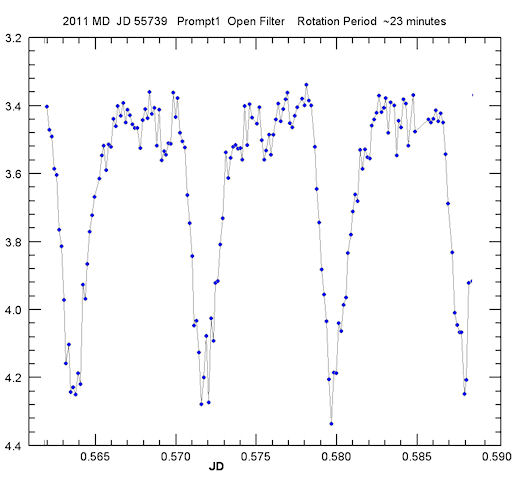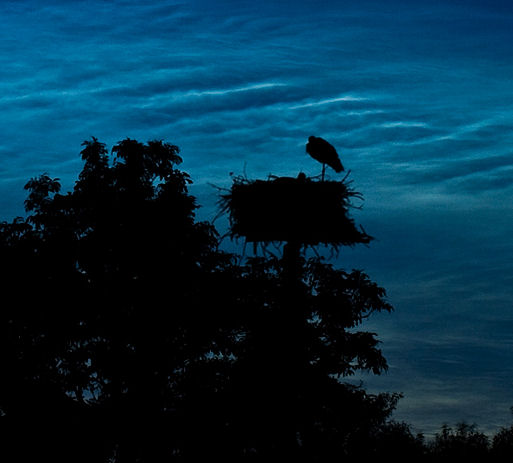Turn your cell phone into a field-tested satellite tracker. Works for Android and iPhone. | | |
QUIET SUN: Solar activity is very low. Only one small sunspot group (AR1241) is crossing the visible face of the sun, and it poses no threat for strong flares.
ASTEROID FLYBY: Asteroid 2011 MD is flying past Earth today, Monday June 27th. At closest approach around 1:00 p.m. EDT the ~10-meter space rock was only 12,000 kilometers (7,500 miles) above the planet's surface. NASA analysts said there was no chance it would strike Earth, and indeed it didn't.
Astronomers around the world are monitoring the object as it flies by. Using a remotely-controled telescope in Cerro Tololo, Chile, Joe Pollock of Appalachian State University obtained this light curve:

"Asteroid 2001 MD appears to be rotating with a 23.3 or 11.6 minute period," notes Pollock.
After closest approach to Earth, the spinning asteroid will recede through the zone of geosynchronous satellites. The chances of a collision with a satellite or manmade space junk are extremely small, albeit not zero. Stay tuned for updates.
flyby movies and images: from Marco Langbroek of Sierra Stars Obs., California; from Efrain Morales Rivera of Aguadilla, Puerto Rico; from Nick Howes of Siding Spring Australia; from Rafael Ferrando of the Observatory Pla d'Arguines in Segorbe, Spain; from Libor Vyskocil of the Observatory Upice in the Czech Republic; from Nick James of Chelmsford, UK; from Rolando Ligustri of Talmassons Observatory, Italy
ELECTRIC BLUE STORKS: Electric-blue noctilucent clouds are rippling over Europe this week. In Poland, that means sky watchers should be alert for the silhouettes of storks:

Marek Nikodem of Szubin, Poland, caught this specimen backlit by night-shining clouds on June 26th. "Each year in late spring-early summer, thousands of storks (Ciconia ciconia) arrive in Poland for nesting," he says. "Their arrival coincides with the summer onset of noctilucent clouds. Whenever young storks are born in the heavens, we can admire the NLCs!"
Noctilucent clouds form at the very top of Earth's atmosphere, at the edge of space itself where meteoroids can seed the formation of tiny ice crystals. When summer sunlight strikes these crystals--voila!--the sky glows electric blue. High-latitude observers should look for these strange clouds just after sunset or before sunrise; observing tips may be found in the 2009 NLC gallery.
more images: from Ivo Dinsbergs of Riga, Latvia; from John Houghton of Newtown Linford, Leicestershire; from Aurimas Dirse of Vilnius, Lithuania; from Barbara Grudzinska of Warsaw, Poland; from Richard Fleet of Pewsey Vale, Wiltshire, England;
June 2011 Aurora Gallery
[Aurora alerts: text, voice] [previous Junes: 2010, 2008, 2001]
June 15th Lunar Eclipse Gallery

